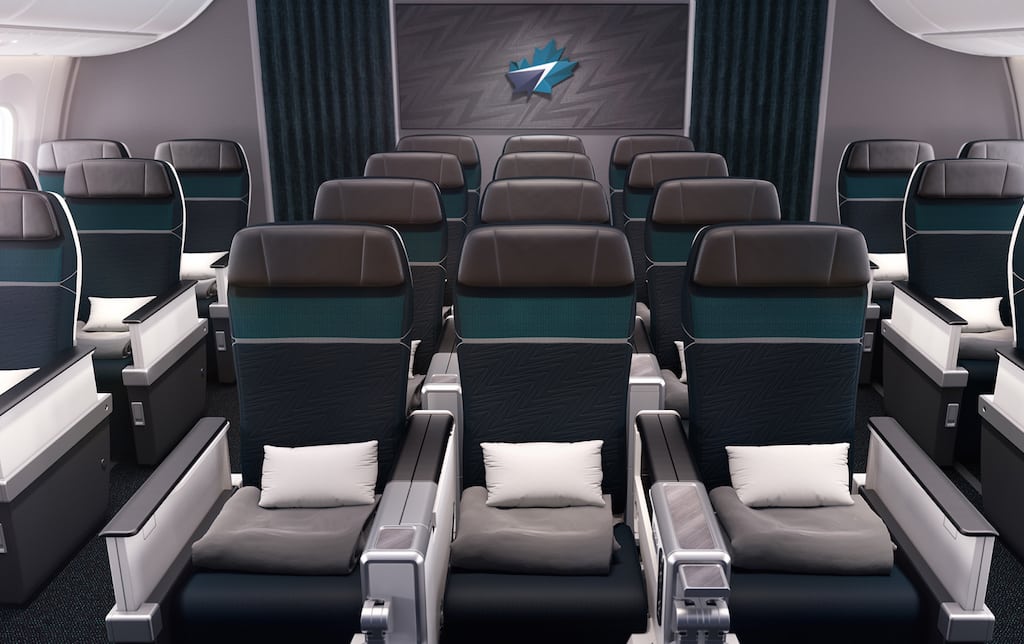Skift Take
Investors sometimes ask why Southwest Airlines has avoided straying too far from its roots. They wonder if it should assign seats, or add a business class cabin, or sell meals on board. But Southwest almost always prefers simplicity. Given how much WestJet — once a Southwest clone — has struggled as it has evolved, we now understand why Southwest is so conservative.
For 52 consecutive quarters, Canada’s WestJet Airlines has posted a profit. But there’s reason to believe that impressive streak may end by June, even as many other North American airlines report near-record profits, despite rising fuel prices.
Canada’s No. 2 airline is struggling because of several factors, including aggressive moves by competitors, more expensive fuel prices, higher-than-expected costs related to a recent strategy shift, and labor unrest. WestJet’s pilots have government permission to strike as soon as May 19 to protest low wages and what they are are unfair work rules, and some potential customers, fearful a strike might disrupt their travel plans, already may be booking elsewhere.
“What we’ve seen over the last two weeks is a significant deferral of bookings, while some guests will either postpone travel plans or make other decisions,” CEO Ed Sims said Tuesday.
That news put a damper on WestJet’s first quarter earnings call, the first for Sims, who took over in March after former chief executive Gregg Saretsky abruptly retired. WestJet announced a small profit for the March quarter, reporting net earnings of C$37.20 million, or about $28.73 million U.S., a decrease of about 20 percent, year-over-year.
But the airline’s warnings about what might come next with pilots spooked investors, and its stock fell almost 10 percent after the call, reaching a two-year low at Tuesday’s close. Executives said they’re confident they can settle before a strike, but even if that happens, the second quarter could be a rough one.
“As we are currently witnessing with Air France, strikes and even the (credible) threat of strikes can be very damaging to the finances and operations to an airline,” Nishant Mani, an analyst at J.P. Morgan, wrote in a report. “Strike-related book-aways would clearly favor Air Canada in this environment and give competitors the ability to take advantage of operational weakness and labor disarray.”
No Longer Beloved by Investors
Not long ago, WestJet was an investor darling, a near-perfect clone of Southwest Airlines, respected by investors for its simplicity and low costs.
From its first flight in 1996 until 2013, when it began flying turboprops, WestJet had an all-Boeing 737 fleet, using the all-coach aircraft to fly short-haul routes in North America. It could often undercut on Air Canada on price, because it had lower costs than its main legacy competitor.
Today, however, WestJet is trying to look more like Air Canada. After adding turboprops to feed passengers to its hubs, WestJet began flying to Europe, first in 2014 with 737s, and two years later with used Boeing 767s, an aircraft prone to maintenance trouble.
As WestJet has expanded, it has lost some what made it unique, especially its cheery corporate culture in which employee groups generally supported management. And while it remains a low-cost-carrier, WestJet’s costs are no longer that much lower than a legacy carrier’s.
To compensate, WestJet is trying two divergent strategies. It is nearly-simultaneously expanding into the lowest and highest market niches.
It is building an ultra-low-cost-carrier, similar to Spirit Airlines, to attract the most price-sensitive short-haul customers just before it adds Boeing 787s with flat-bed business class seats to chase higher-value customers that now fly legacy airlines. It unveiled the new premium seats Tuesday, and they look remarkably similar to Air Canada’s.
This is a big change for an airline that is still essentially an all economy class-carrier, and it’s not clear it will work. WestJet plans to use the new 787s to expand long-haul flying next year, but Air Canada is expected to vigorously move to protect its profits.
The challenges at the low end of the market are different.
WestJet’s discount airline, called Swoop, is slated to begin flying next month, and should have 10 aircraft by the third quarter of next year. But Swoop is a major issue for the WestJet’s pilots union. Understandably, WestJet wants to keep costs as low as possible, but pilots have objected to how the company has recruited pilots.
“We strongly believe that the WestJet pilots who built this airline must be flying WestJet airplanes, which includes Swoop,” Capt. Rob McFadyen, a union leader, said at a rally Tuesday. “The company simply cannot outsource our jobs.”
Both the 787 and the new discount airline will almost certainly test investors’ patience, as over the next several months both projects will produce big costs, while generating little revenue. But over the long-term, Sims said he is confident they’re the right move to ensure the airline’s viability. After taking over for Saretsky — he had been chief commericial officer since May 2017 — Sims said he never considered changing the company’s strategy.
“We are in a pivotal year of our evolution,” he said. “We are making the necessary investment now to build the infrastructure required to transform our business.”
The Daily Newsletter
Our daily coverage of the global travel industry. Written by editors and analysts from across Skift’s brands.
Have a confidential tip for Skift? Get in touch
Tags: air canada, airline innovation, westjet
Photo credit: WestJet is not just as simple all-Boeing 737 airline anymore. Pictured is the premium economy section that will go on the Boeing 787. WestJet
